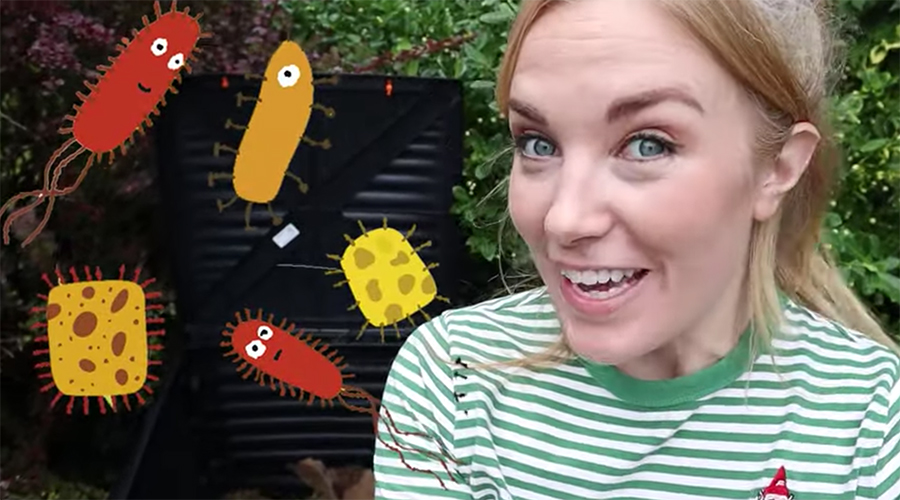This mini compost bin activity is a great way to learn more about how we can use our waste products to improve local soil and our planet at the same time. Maddie Moate shares how to make a windowsill composter in this STUFF to make and do with Maddie video, a companion to her TKSST Gift Guide-recommended book STUFF: Eco Stories of Everyday stuff. She explains:
“All composters are brilliant whether they’re big or small because they all help to reduce the amount of food waste that ends up in landfill.
“When our leftovers sit in landfill they create harmful greenhouse gases like methane and this contributes to global warming. But take a look in here. You might be able to see some food scraps and vegetable peelings.”
“If we use a composter to break down to decompose our garden and food waste at home, the amount of harmful greenhouse gases that go into the environment are reduced.”
And you end up with some nutrient-rich compost to add to your garden, making plants healthier and happier. The moisture from compost, called compost tea, can also be used as fertilizer. She demonstrates what you’ll need from the recycling bin and how to put it all together.
Moate also goes outside to her large compost bin to share how the decomposition of brown and green waste generates heat that can be seen with a thermal camera. From Cornell University’s Compost Physics:
“Compost heat is produced as a by-product of the microbial breakdown of organic material… Compost managers strive to keep the compost below about 65°C [149°F] because hotter temperatures cause the beneficial microbes to die off. If the pile gets too hot, turning or aerating will help to dissipate the heat.
“Decomposition occurs most rapidly during the thermophilic stage of composting (40-60°C) [104-140°F], which lasts for several weeks or months depending on the size of the system and the composition of the ingredients…
“As the compost begins to cool, turning the pile usually will result in a new temperature peak because of the replenished oxygen supply and the exposure of organic matter not yet thoroughly decomposed.”
Keeping those billions of compost bacteria and fungi happy means providing the best possible conditions for them to thrive: Stirring a compost pile to increase oxygen, keeping it a bit moist (but not wet), and making sure there’s a good mix of browns and greens.
Find Maddie Moate’s book on The TKSST Gift Guide and follow her on Instagram and YouTube.
Next, watch these composting videos:
• How Does Oakland Turn Food Scraps to Soil?
• The Compost Thrower
• Worm Bin: 100-day time-lapse
• America’s top composting city helps farms grow food & save water
Curated, kid-friendly, independently-published. Support this mission by becoming a sustaining member today.




